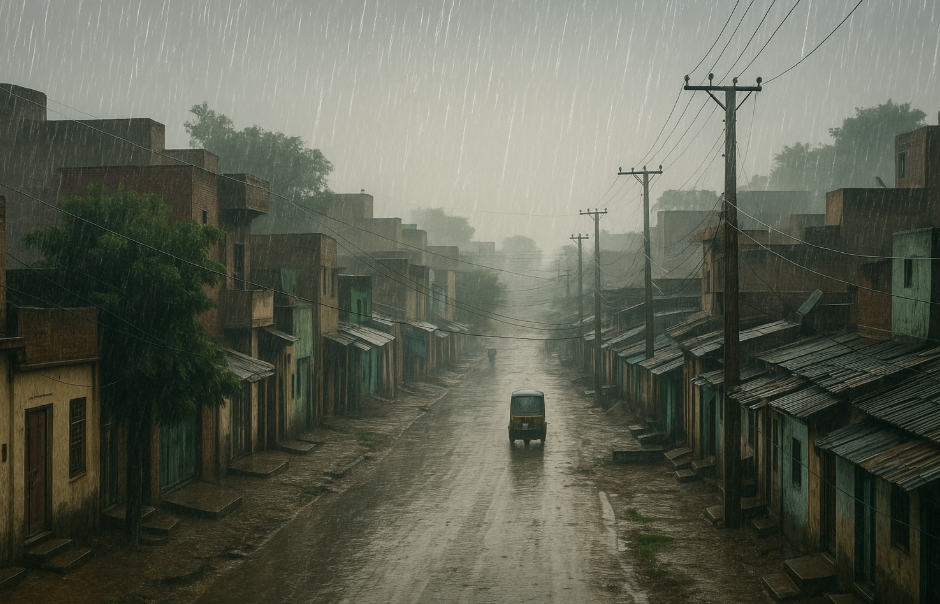Chunian experiences a hot desert climate, classified as BWh under the Koppen climate classification. The weather is characterized by scorching summers, mild winters, and a relatively short monsoon season. The city sees extreme temperatures during peak summer months, while winters are generally dry and cool, offering a brief but pleasant respite from the intense heat. Understanding the climate and weather of Chunian is essential for farmers, travelers, and residents alike, as it directly influences the region’s lifestyle, economy, and daily routines.
Chunian is a historic city and tehsil located in the Kasur District of Punjab, Pakistan. It lies approximately 70 kilometers south of Lahore and holds great historical, agricultural, and administrative importance in the region. The city is strategically positioned along the Pattoki–Kasur road, making it a key junction connecting several towns and villages.
Historically, Chunian dates back over 500 years and is believed to have been named after Chunni, the daughter of Raja Todar Mal, a prominent minister of the Mughal Empire. In 1978, archaeological excavations in the area uncovered coins from the era of Alexander the Great, further highlighting the region’s deep historical roots.
Chunian Weather During Summer
Hot summers are the hallmark of Chunian weather. Summers in Chunian begin in late April and continue through July. During this time, temperatures often rise above 40 °C (104 °F), with June and July being the hottest months. It is not uncommon for daytime highs to reach 42 °C (108 °F), accompanied by dry winds and strong sunlight. The nights offer only modest relief, with temperatures usually hovering around 28–30 °C. The intense heat can make outdoor activities difficult during the daytime, and residents typically limit exposure during peak hours.
Monsoon and Rainfall
The monsoon season arrives between late June and August, bringing some much-needed rainfall to the region. However, precipitation levels are moderate compared to other parts of Pakistan. Thunderstorms and short, heavy showers are common during this period, providing temporary relief from the heat. The monsoon also contributes significantly to the local agriculture, replenishing water sources and supporting crop growth.
Chunian Weather During Winter
Winters in Chunian last from December to February. Unlike the summer, this season is mild and comfortable. Average daytime temperatures range between 18 °C and 22 °C, while nighttime temperatures can fall to around 5–8 °C. There is little to no frost, and the weather remains dry, with occasional fog in the early morning hours. This period is considered the most favorable for travel and outdoor work.
Chunian Overview

Chunian city has grown steadily in population and infrastructure. In the 1998 census, its population was around 47,600, which has since increased to an estimated 63,000–87,000 by 2023. The city serves as a commercial and agricultural hub, well known for its grain markets, sugar mills, and proximity to the Changa Manga forest—one of the largest man-made forests in South Asia. In 2016, the Punjab government established an industrial zone in Chunian to further enhance the area’s economic development.
Administratively, Chunian is one of four tehsils in Kasur District. It is subdivided into 27 union councils and includes several notable towns and villages such as Kanganpur and Allahabad. According to the 2017 census, the tehsil had a population of around 826,000, with roughly 20% living in urban areas and the rest in rural communities. By 2023, the estimated population had grown to nearly 980,000. The literacy rate stands at approximately 60.6%, which, while improving, still trails behind major urban centers in Punjab.
The intense summer heat in Chunian, often exceeding 40°C, has a significant impact on both agriculture and daily life. Farmers must adjust their routines, working early in the morning or late in the evening to avoid heatstroke and dehydration. Crops such as wheat and sugarcane are well-suited to the climate, but prolonged dry spells and water shortages during peak heat can affect yields. In daily life, people limit outdoor activities during midday hours, and electricity demand surges due to widespread use of fans and air conditioners, often leading to power outages.
Frequently Asked Questions Abou Chunian Weather (FAQ)
1. What type of weather does Chunian have?
Chunian has a hot desert climate (BWh), characterized by extremely hot summers, mild winters, and moderate monsoon rains during the mid-year months.
2. What are the average summer temperatures in Chunian?
During peak summer (May to July), daytime temperatures in Chunian often exceed 40°C (104°F), and can rise as high as 42°C (108°F).
3. How does Chunian’s weather affect agriculture?
The hot and dry weather influences crop cycles significantly. While crops like wheat, maize, and sugarcane thrive, extreme heat and limited rainfall can stress water resources and reduce productivity without proper irrigation.
4. When is the monsoon season in Chunian?
The monsoon season in Chunian typically occurs between late June and August, bringing short but intense rain showers that help replenish soil moisture and support agriculture.
5. How does Chunian weather looks like in winter?
Winters in Chunian are mild and dry, with daytime temperatures ranging from 18°C to 22°C, and nighttime lows dropping to around 5–8°C. It’s the most comfortable season for outdoor work and travel.
6. What are some key features of Chunian city and tehsil?
Chunian is a historically significant city in Kasur District, known for its agricultural markets, sugar mills, and proximity to Changa Manga forest. The tehsil comprises 27 union councils and serves a growing population of nearly 1 million people.
7. How do residents cope with extreme summer heat in Chunian?
Residents adapt by avoiding outdoor activity during peak sun hours, using fans or air conditioners, staying hydrated, and shifting work routines to early mornings or evenings. Farmers often rely on tube wells or canals for irrigation during dry spells.